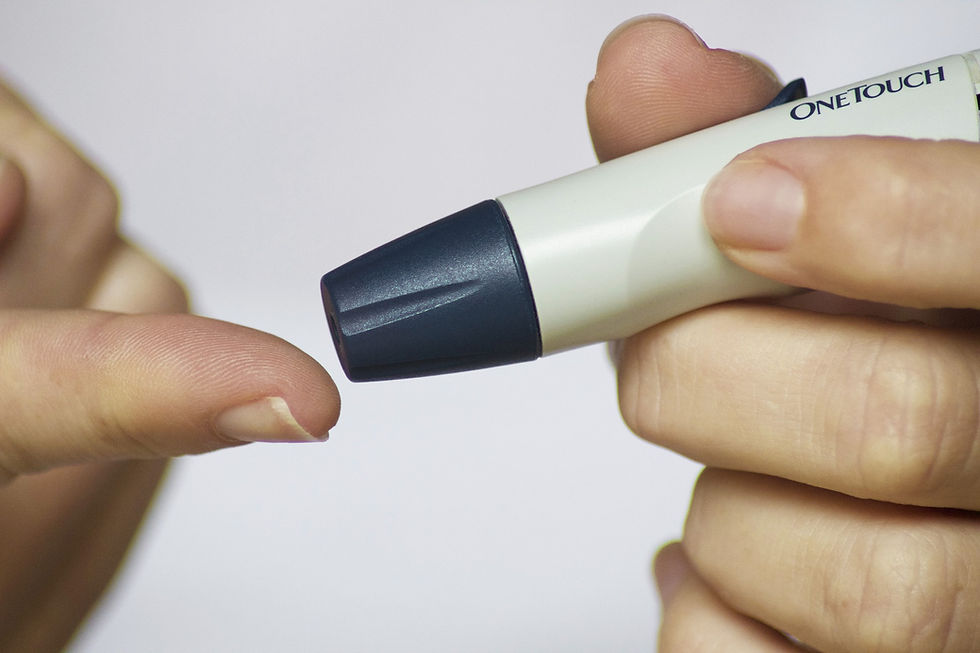
Project Context
Diabetic Ketoacidosis (DKA) is a condition that develops when the body of a type one diabetic's insulin levels are too low, leading to the breakdown of fat instead of glucose for fuel. DKA remains the most common high blood sugar emergency for people with type 1 diabetes however can also occur in patients with type 2 diabetes, it can lead to death (Dhatriya, K.). The process of breaking down fat produces ketones to be used for fuel which can be detected in the urine, blood and breath (Reinhart, J.). The onset of severe symptoms of DKA is relatively rapid, typically taking between 24 – 48 hours to develop, hence regular testing and monitoring is necessary (Reinhart, J.). Currently the primary method of detection for DKA is the finger prick test, an invasive and expensive test which requires patients to draw blood each time the test is taken. Urine analysis has been investigated as a method of detection however has been deemed not suitable due to the difficulties in detection and the risk of renal dysfunction impairing results (Qiao, Y.). Breath analysis has also been studied and found to be a reliable method of detection on par with blood tests, however there is currently a lack of available practical options for the at home user on the market (Qiao, Y.).
The Our Health in Our Hands initiative is a collaboration between ANU and ACT Health with the goal of developing a platform for collaboration between patients, clinicians and health care providers with researchers from the ANU to transform healthcare by developing new health technologies and solutions. The initiative aims to utilise advances in medicine and health services to improve the accuracy and ease of diagnosis along with developing precisely targeted therapy for individuals, the initiatives initial core focus are multiple sclerosis (MS) and diabetes. Work at the ANU has gone into developing an array style sensor to detect acetone content in a user's breath, the sensor would be the first of its kind to go to market and aims to make the monitoring and detection of Diabetic Ketoacidosis (DKA) easier and less invasive for type 1 diabetics.
The development of a handheld device to mount the acetone sensor has been the focal point of several past capstone projects. Past projects have developed and refined the overall electrical design, casing design and refined the design based on input from both the client and the end users. Past teams have also developed a basic application designed to link via Bluetooth to the design, this information has been compiled and handed over to this iterations project team to build off of.
Project Goal
The Keto Whistle is an ongoing capstone project with the overarching goal to produce a feasible, functioning design of a hand-held analyser to measure acetone levels in the user's breath ready to be taken to market. This device is to utilise an array style sensor and come linked to a phone app that is able to log readings from the device for simpler tracking.

Our Outcomes
The target outcome of this semester's project is to finish and finalise the design for the device and to produce a functioning prototype ready for the client to test, utilising the simplified standard acetone sensor provided by the client. The stretch outcomes for the project are a phone application designed to link to the device to log and display readings and to design and produce a prototype with the array sensor the client will provide.